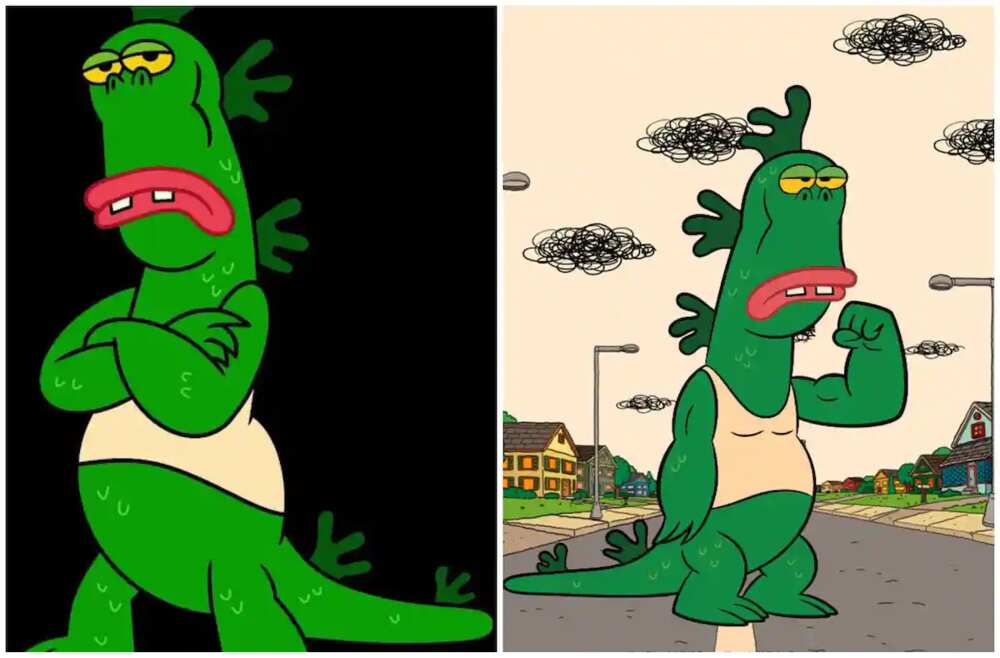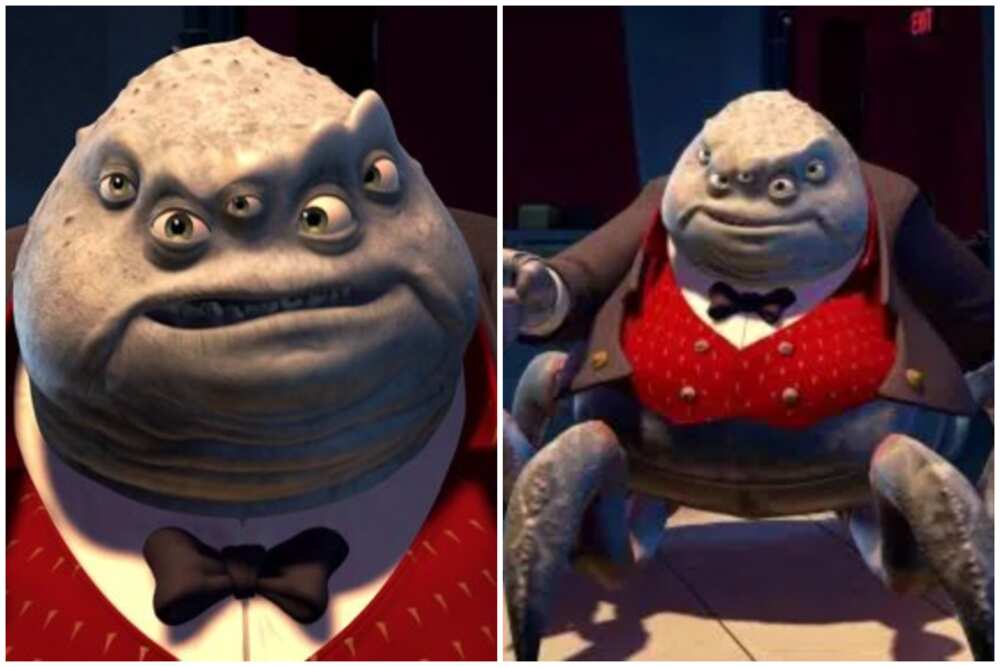When you think about cartoon characters, your mind probably paints a picture of bright colors, exaggerated features, and memorable personalities. But what about the overlooked characters, the ones who don’t fit the typical mold? Enter black ugly cartoon characters, a category that challenges traditional beauty standards and dives deep into diversity and representation. These characters may not always get the spotlight, but they play a vital role in shaping how we perceive beauty and individuality. So, buckle up, because we’re about to dive into a world where being different is celebrated.
Let’s be honest—animation has long been dominated by certain stereotypes. From the way characters look to how they behave, there’s often an unspoken standard that seems to define what’s considered “attractive” or “worthy” on screen. But black ugly cartoon characters break those rules, showing us that imperfections can be just as beautiful, if not more so. They remind us that true representation means embracing all forms of humanity.
This article isn’t just about celebrating quirky or unconventional characters; it’s about understanding why these characters matter. In a world where diversity is increasingly important, exploring black ugly cartoon characters gives us insight into how animation can reflect real life. Let’s get started, shall we?
Read also:Unlocking The Secrets Of One Sales Your Ultimate Guide
Here's your quick navigation:
- Biography of Iconic Characters
- The Importance of Representation
- A Brief History of Animation
- Breaking Stereotypes
- Examples of Black Ugly Cartoon Characters
- Character Design and Development
- Cultural Impact
- Audience Perception
- The Future of Animation
- Conclusion
Biography of Iconic Characters
Before we dive into the broader topic, let’s take a closer look at some iconic black ugly cartoon characters who’ve made waves in the animation world. These characters aren’t just caricatures—they’re representations of cultural nuances and social commentary. Below is a quick bio of a few standout characters:
| Name | Series | Year Introduced | Creator |
|---|---|---|---|
| Robert Terrell | The Boondocks | 2005 | Aaron McGruder |
| Mama Junebug | King of the Hill | 1997 | Mike Judge |
| Bender | Futurama | 1999 | Matthew Groening |
| Uncle Ruckus | The Boondocks | 2005 | Aaron McGruder |
Why These Characters Matter
Each of these characters brings something unique to the table. Whether it’s their quirks, personalities, or the way they challenge societal norms, they leave a lasting impression on audiences. For instance, Uncle Ruckus from "The Boondocks" is often seen as a controversial figure, but his character provides a satirical take on race relations and cultural identity.
The Importance of Representation
Representation in media is more than just putting diverse characters on screen—it’s about giving voices to those who’ve been historically marginalized. Black ugly cartoon characters play a crucial role in this narrative by showcasing that beauty isn’t one-size-fits-all. They highlight the importance of embracing individuality and challenging preconceived notions of what’s considered attractive.
How Representation Shapes Perception
When children see characters that look like them or reflect their experiences, it validates their existence and builds self-esteem. It’s not just about seeing someone who looks similar; it’s about seeing someone who represents their struggles, triumphs, and everything in between. Black ugly cartoon characters provide a mirror for viewers to see themselves in a new light.
A Brief History of Animation
To understand the significance of black ugly cartoon characters, we need to look at the evolution of animation itself. From the early days of hand-drawn sketches to the digital masterpieces of today, animation has come a long way. However, representation hasn’t always been at the forefront of this journey.
Read also:Paul Edmonds Hair Salon The Ultimate Guide To Hair Perfection
The Early Days
In the early 20th century, animation was often rife with racial stereotypes. Characters were caricatured to fit societal prejudices, and diversity was largely absent. As time went on, animators began to recognize the importance of inclusivity, leading to the creation of more nuanced and diverse characters.
Breaking Stereotypes
One of the most significant contributions of black ugly cartoon characters is their ability to break stereotypes. By challenging traditional beauty standards, these characters pave the way for a more inclusive and accepting world. They prove that being different isn’t a flaw—it’s a feature.
Examples of Stereotype-Busting Characters
- Robert Terrell: Known for his brash personality and no-nonsense attitude, Terrell challenges the stereotype of the “angry black man.”
- Mama Junebug: With her larger-than-life persona and sharp wit, Mama Junebug defies the notion of what a mother figure should look like.
- Bender: While not traditionally “black,” Bender’s character incorporates elements of racial humor and commentary, making him a standout in the world of animation.
Examples of Black Ugly Cartoon Characters
Now, let’s take a deeper dive into some specific examples of black ugly cartoon characters. These characters aren’t just memorable—they’re game-changers in the world of animation.
1. Uncle Ruckus
Uncle Ruckus from "The Boondocks" is a character that polarizes audiences. His overtly racist and self-loathing behavior serves as a critique of internalized racism. Love him or hate him, there’s no denying his impact on the animation landscape.
2. Robert Terrell
Robert Terrell, another character from "The Boondocks," is a complex figure who embodies the struggles of black masculinity. His character challenges viewers to rethink their perceptions of strength and vulnerability.
Character Design and Development
Designing a character is both an art and a science. Animators must consider everything from physical appearance to personality traits to create a character that resonates with audiences. For black ugly cartoon characters, this process often involves pushing boundaries and embracing imperfections.
Key Elements of Character Design
- Physical Features: Exaggerated or unconventional features can make a character stand out and challenge traditional beauty standards.
- Personality Traits: A well-developed personality adds depth and complexity to a character, making them more relatable and memorable.
- Cultural Nuances: Incorporating cultural elements into a character’s design can provide context and authenticity.
Cultural Impact
The cultural impact of black ugly cartoon characters cannot be overstated. They’ve sparked conversations about race, identity, and representation, influencing both creators and audiences alike. By embracing characters that don’t fit the mold, animation can become a powerful tool for social change.
How These Characters Influence Society
Characters like Uncle Ruckus and Robert Terrell have sparked debates about race and representation, encouraging people to question their biases and assumptions. They’ve also inspired a new generation of animators to create more inclusive and diverse content.
Audience Perception
Understanding how audiences perceive black ugly cartoon characters is essential. While some viewers may find these characters offensive, others see them as a necessary critique of societal norms. It’s all about perspective and context.
Reactions from Different Demographics
- Young Audiences: Children may not fully grasp the nuances of these characters but are often drawn to their quirky personalities.
- Adult Audiences: Adults may appreciate the social commentary and satire these characters bring to the table.
- Cultural Critics: Critics may analyze these characters through a lens of representation and diversity, highlighting their significance in the broader media landscape.
The Future of Animation
As animation continues to evolve, the role of black ugly cartoon characters is likely to grow. With increasing demands for diversity and inclusion, creators are more motivated than ever to produce content that reflects the world we live in. The future looks bright for characters that challenge the status quo.
Trends to Watch
- Increased Diversity: More animators are focusing on creating diverse characters that represent a wide range of backgrounds and experiences.
- Social Commentary: Characters will continue to serve as vehicles for social commentary, addressing important issues like race, gender, and identity.
- Technological Advancements: Advances in technology will allow for even more creative and innovative character designs.
Conclusion
Black ugly cartoon characters may not always get the recognition they deserve, but their impact on the world of animation is undeniable. They challenge stereotypes, promote diversity, and encourage audiences to embrace individuality. By celebrating these characters, we celebrate the beauty of being different.
So, the next time you come across a character that doesn’t fit the mold, take a moment to appreciate them. They might just have something important to say. And hey, if you’ve enjoyed this article, why not leave a comment or share it with a friend? Let’s keep the conversation going!


